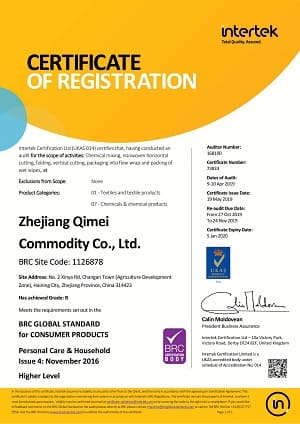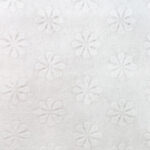Spunlace-Vliesstofftyp: Polyester, Poly-Viskose-Mischmaterial, Bambusfaser, Holzzellstoff (spülbar), Baumwolle oder Sojafaser (biologisch abbaubar)
Flach oder strukturiert (Ihr eigenes LOGO ist verfügbar)
Grammatur: 30–80 g/m²
1/10/30/80/100/120/160 Stück/Packung
The most common size of cosmetic wipes is around 2 inches by 2 inches to 4 inches by 4 inches. This size is convenient for single-use and provides enough surface area to clean and freshen the external genital area. However, some intimate wipes may be smaller or larger than this standard size to cater to specific preferences or needs of consumers.
1. Wiederverschließbarer Plastikbeutel: Dies ist die häufigste Art der Verpackung von Feuchttüchern. Es besteht aus Kunststoff und hat oben einen wiederverschließbaren Streifen, um die Tücher frisch und feucht zu halten.
2. Flip-Top-Deckelbehälter: Diese Verpackungsart besteht aus einem Kunststoffbehälter mit einem Flip-Top-Deckel, der geöffnet und geschlossen werden kann, um an die Tücher zu gelangen.
3. Softpack mit Flip-Top-Deckel aus Kunststoff: Ähnlich wie der Flip-Top-Deckelbehälter wird diese Verpackung in einem Softpack geliefert und hat einen Flip-Top-Deckel aus Kunststoff für einfachen Zugriff.
4. Pop-up-Spender: Diese Verpackungsart verfügt über einen Pop-up-Spendermechanismus, der jeweils ein Tuch herauszieht.
5. Reisepaket: Eine kleine Verpackung für unterwegs, oft mit einem Schnappverschluss aus Kunststoff.
6. Einwegverpackung: Diese Feuchttücher werden in kleinen, versiegelten Päckchen geliefert, die praktisch für Reisen oder Outdoor-Aktivitäten sind.
7. Nachfüllbeutel: Diese größere Verpackung dient zum Nachfüllen anderer Feuchttuchbehälter und hat normalerweise eine wiederverschließbare Öffnung.
Water: Water is typically the main ingredient in cosmetic wipes, as it serves as a solvent to dissolve and remove dirt, makeup, and other debris from the skin.
Surfactants: Surfactants are compounds that reduce the surface tension of water and help it to spread more evenly over surfaces. They can be used in cosmetic wipes to help remove dirt and grease from the skin.
Emollients: Emollients are ingredients that help to moisturize and soothe the skin. They may be added to cosmetic wipes to help prevent dryness or irritation.
Preservatives: Preservatives may be added to cosmetic wipes to prevent the growth of bacteria, mold, and other microorganisms that can cause the wipes to spoil or lose their effectiveness.
Fragrances: Fragrances may be added to cosmetic wipes to give them a pleasant scent and improve the overall user experience.
Other ingredients: Depending on the intended use of the product, other ingredients such as vitamins, plant extracts, or sunscreen agents may be added to cosmetic wipes to provide additional benefits to the skin.
Good Manufacturing Practice (GMP): GMP is a set of guidelines that ensure that products are consistently produced and controlled according to quality standards. Compliance with GMP is usually required for products that are intended for human use, including cosmetic wipes.
ISO 9001: This is a quality management system certification that sets standards for the design, production, and delivery of products. It is often required for businesses that supply products to other companies.
ISO 22716: This certification is specific to the cosmetics industry, and sets standards for the production, control, storage, and shipment of cosmetic products.
Oeko-Tex Standard 100: This certification sets standards for the safety and environmental impact of textile products. It may be relevant for cosmetic wipes that are made from textile materials.
FDA Registration: In the United States, manufacturers of cosmetic products are required to register their facilities with the U.S. Food and Drug Administration (FDA).












